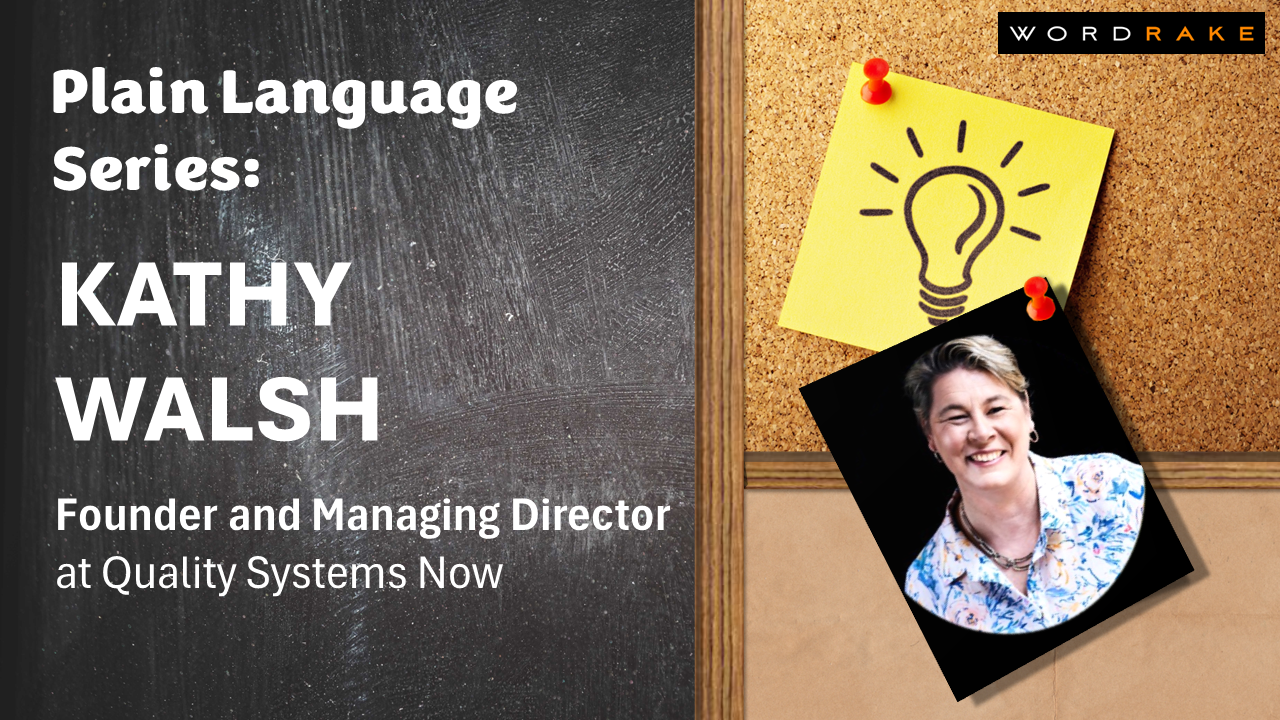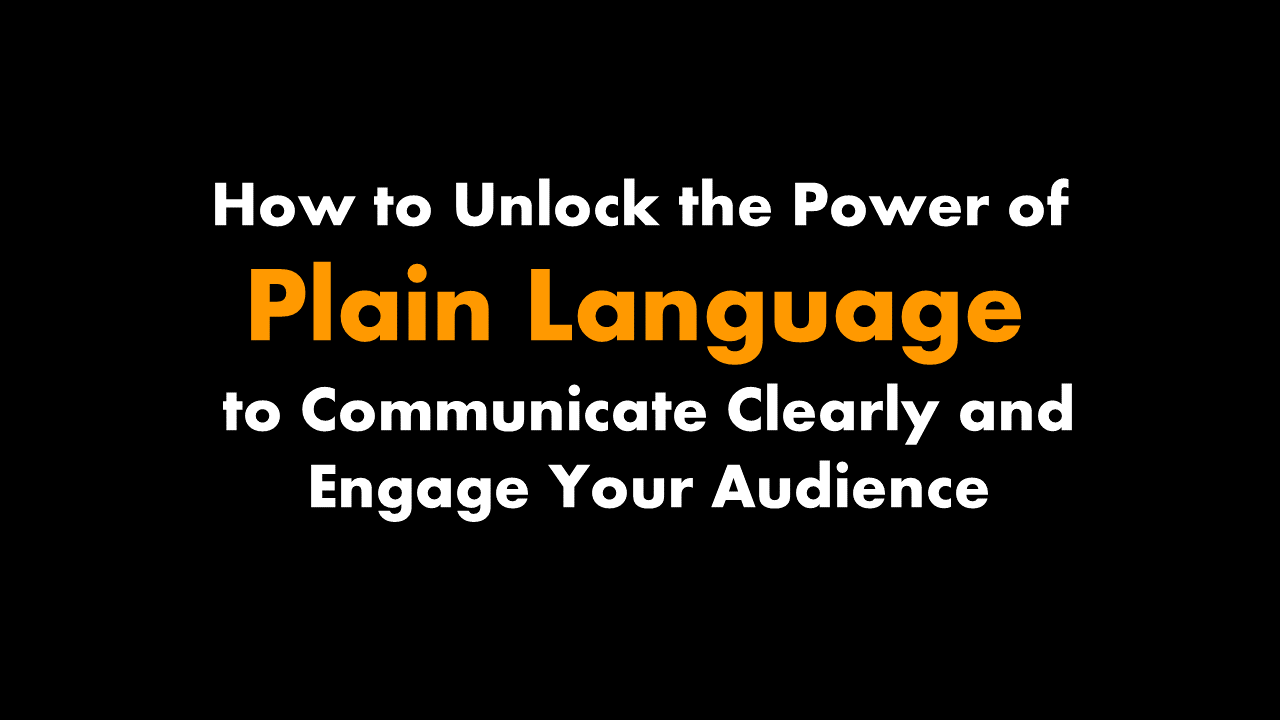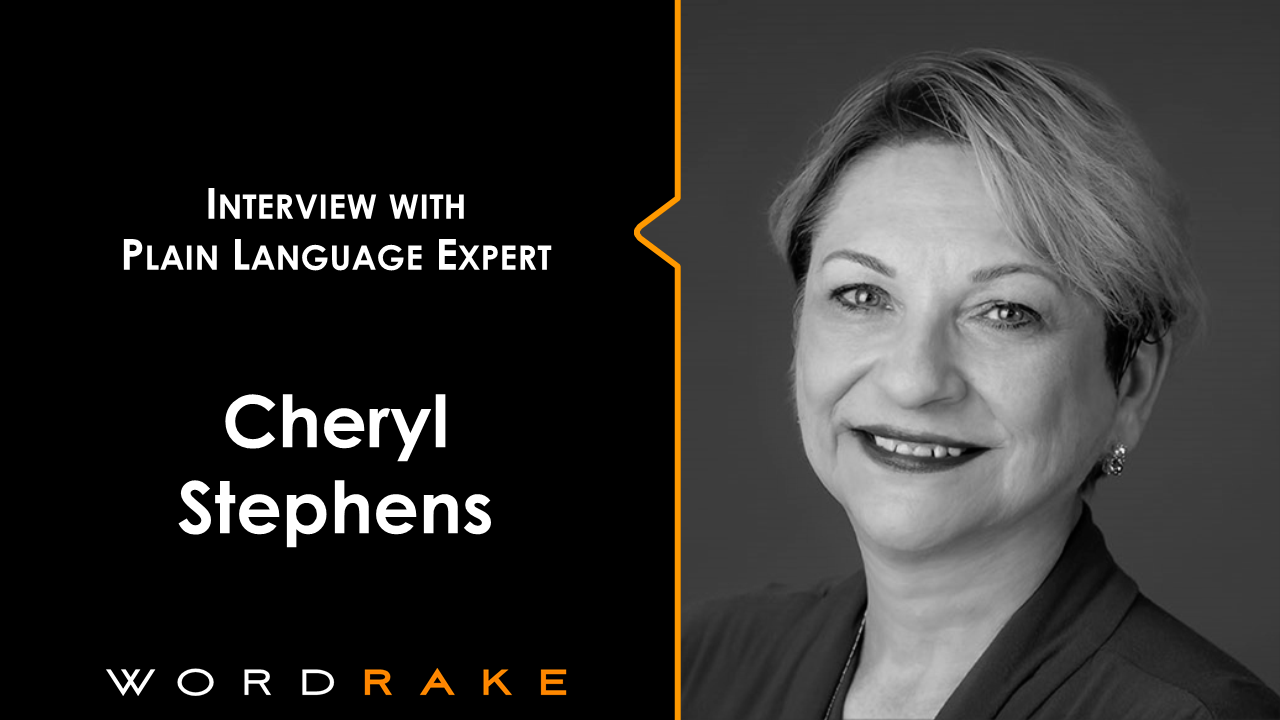We've all run into technical instructions for a product that flew way over our heads. This is annoying when it's something for fun, but when it comes to things like medication and medical devices, those confusing documents can be life threatening. That's why scientists like Kathy Walsh and her company Quality Systems Now work with the companies producing these products to make their information as clear as possible. Kathy shares the importance of plain writing in the sciences in her Q&A for International Plain Language Day.
What is your role and how is it connected to plain language?
I am the founder and Managing Director of Quality Systems Now (QSN), an Australian consulting company that helps pharmaceutical and medical device companies gain or maintain compliance accreditations or meet the manufacturing quality expectations required to make therapeutic goods.
We are scientists specialising in quality assurance and manufacturing, so we do a lot of procedural technical writing. If a company wants its procedures to be followed, and therefore remain compliant, then they need to be written in a user-friendly and plain language style. My team and I are becoming increasingly sought after to help companies simplify their procedures and train them how to write in plain language.
What prompted your interest in plain language?
Many companies have poorly written procedures that cause errors, mix-ups and confusion. This can have a massive impact on manufactured medicines or devices, which are costly to resolve or potentially dangerous to the patient.
I became very interested in plain language about 20 years ago now, when I qualified as a technical writer in a Research and Development team—the team were brilliant in their scientific fields, but many were poor written communicators and they struggled to write procedures and reports for general users. I often translated the scientific gobbledygook into simple, plain language documents. And as they say, the rest is history!
What is the difference between plain language and plain English?
Plain language to me, is user-friendly language, suitable for the intended user—regardless of the language being spoken or written. As an Anglophile, plain English, for me, is the same. But I am sure there are nuances that are specific to individual languages.
What are unexpected ways that plain language comes up in law, healthcare, and finance?
Plain language is actually mandated as part of the Good Manufacturing Practice (GMP) regulations for therapeutic goods across many countries. Some documentation clauses now require simple, mandatory style instructions within procedures, manufacturing instructions and policies. And auditors regularly cite companies with poor documentation.
Everything that is required to make a medicine or medical device must be written in procedures and manufacturing instructions, ensuring the same outcomes each time. Each bottle or vial of medicine has the same composition: the same concentration of the active constituents. Without that, there would be more variability in medicines, impacting the dose taken by the patient each time.
What are some factors that indicate a need to write in plain language?
If you’re writing, then write in plain language! Why would you write any other way?
Of course, this does mean writing for the intended audience, so if the audience understands a lot of technical details, then writing for them is different to writing for an audience that does not have that understanding. I think as a scientist, I see this a lot. Audience analysis is important in how you communicate.
Many professions (i.e., law, medicine, finance) are gatekeepers of important information for the public. What obligations do professionals have to communicate in plain language?
Medical writers are now required, as part of the therapeutic regulations, to communicate complex information in a simple way. This includes plain language, layout of information, font sizes etc. For example, labels on medicines must now meet stringent layout rules, to prevent patients from misreading or misunderstanding information about the medicine. Labels and patient information on leaflets within a medicine carton must also signpost warnings, contraindications, or symptoms in user-friendly language.
What’s the most important—yet simple—change professionals can make to consumer-facing documents to improve understanding?
Know your audience and understand the topic!
I find that technical writers often don’t understand a technical topic as well as they ought to. And subject matter experts tend to be oblivious to their audience needs. Both are required to create a well-written document, particularly in a highly regulated industry such as the therapeutic goods industry.
Where will consumers commonly encounter the most confusing language?
Gosh, where do I start? I see a lot of confusing language in internal company procedures – duplication, contradiction, long and rambling sentences, no concept of active voice, excessive paragraph text when tables or bullets would be much more user-friendly etc. There are a couple of reasons for this:
- There might be hundreds of procedures in a company Quality Management System (QMS), so its difficult to ensure consistency across many documents over time, and
- Multiple writers and document approvers can all have their own ideas on what constitutes a ‘good’ document. Unfortunately, most of them have not been trained to write in plain language!
What are some consequential yet common instances where consumers encounter confusing language? How can plain language address these instances?
In a manufacturing or testing company, the largest consequence of confusing language is that a task is not completed the same way each time. This causes errors, mix-ups, cross-contamination—which costs time and money. By training dedicated, internal document writers to create simple, easy to follow documents, there are fewer mistakes and more ‘right first time’ product batches.
What’s the biggest danger to consumers if they don’t understand what is being communicated to them?
If the patient is the consumer, then they could under- or over-dose themselves, both of which may be life-threatening for them.
Beyond writing with simpler words and shorter sentences, what else can professionals do to communicate better for the public’s benefit?
I think the following are equally important to ensuring a document is user-friendly:
- Using active voice
- Ensuring the structure of the document is predictable, consistent with other documents, and easy to navigate
- Ensuring signpost text for navigation – headings, titles, warnings – are short but descriptive
- Using graphics, bullets and tables to present information in a visual manner
What’s one piece of advice that you would offer to help a professional start using plain language?
Get some training on plain language writing where the instructor reviews your writing. Or get a colleague to read something you wrote. Or read my book!
About Kathy Walsh
Kathy helps companies, startups and individuals in regulated industries design & implement quality compliance solutions that increase productivity and master the quality challenges in their marketplace. Kathy has over 20 years’ experience working with companies in the pharmaceutical, medical device, distribution & wholesaling, secondary packaging, compounding, biotech, medtech, and laboratory, R&D and clinical industries.
Kathy is passionate about helping companies and individuals adopt Plain Language writing to increase productivity and compliance, and reduce documentation issues, confusion and user errors. She is a published author on applying Plain Language – you can see her book, Eliminating the Gobbledygook – Secrets to Writing Plain Language Procedures on Amazon (Amazon.com: Eliminating the Gobbledygook - Secrets to Writing Plain Language Procedures: 9781689868105: Walsh, Kathy: Books).
In addition to her scientific qualifications (PhD), Kathy is a qualified project manager, trainer, and technical writer. Kathy is the Director of QSN and runs the QSN training program via QSN Academy. You can find her on LinkedIn.
About WordRake and International Plain Language Day
Plain Language experts Cheryl Stephens and Kate Harrison Whiteside created International Plain Language Day on October 13, 2011 to celebrate the first anniversary of the signing of the Plain Language Act in the United States. Since then, plain language enthusiasts take time each year to celebrate the gains the movement has made.
In October 2022, WordRake celebrated Plain Language Day by releasing their new Simplicity editing mode to help comply with plain language laws. As firm believers in the importance of clear communication, WordRake celebrates October 13th by highlighting experts and leaders in the plain language field. To see how WordRake can help you simplify your writing, take a 7-day free trial today!








